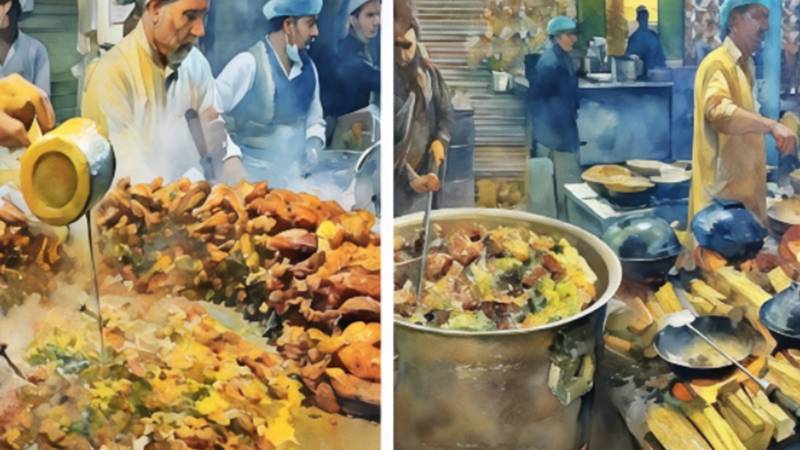
Pakistani cuisine is a colourful tapestry woven from centuries of history, culture, and tradition. It reflects the diverse regions of the country, each with its own unique flavours and cooking techniques. However, in recent years, globalisation and migration have significantly influenced traditional Pakistani food, leading to exciting new trends and fusion dishes that blend local flavours with international influences. This column explores those changes in the context of Pakistani cuisine with some regional variations and the role of food in cultural exchange.
The country's diversity in terms of geography is what influences the food, and every region offers a different type of dish. For example, spicy biryanis and flavoursome curries are characteristics of Sindh, whereas Punjab has heavy dishes such as sarson ka saag and makai ki roti. In the north, grilled meats and rich stews are prized in the mountainous regions.
Traditional cooking techniques also serve to preserve these regional flavours. The curries cooked on open flames or the tandoor breads, baked in clay, form a major part of the Pakistani cuisine.
Globalisation has improved the way we relate to food. With increased connectivity and travel, people are exposed to various cuisines of the world. The outcome of this exposure is that there is a fusion of culinary traditions that adds a richness to Pakistani cuisine.
One of the trends that can be easily noticed is the emergence of fusion dishes, where traditional Pakistani flavours are merged with international ingredients and cooking styles. Chicken tikka, for instance, is now found in wraps and sandwiches, making it a favourite street food among people in urban areas. Biryani, the staple rice dish, is now seen with cheese or even sushi rolls, and so on.
Globalisation and migration have introduced exciting new flavours while allowing traditional recipes to adapt and thrive
Fusion cuisine is being widely experimented in restaurants across Pakistan. Chefs are getting highly creative in incorporating global flavours into traditional dishes. A pizza might be topped with spicy karahi chicken or pasta served with a rich nihari sauce, and these innovative combinations both attract younger diners and reflect the changing appetite of the nation.
In this way, Pakistani cuisine also owes much to migration. As people cross borders in search of education or jobs, they take their traditions with them and bring in new ingredients and cooking techniques that enrich the local cuisine.
Pakistani emigrants in countries like America, Canada, and Britain have opened up restaurants and have been able to bring and adapt traditional recipes according to local tastes. So one could have biryani along with salad or kebabs with fries-the same, while catering to an audience spread over a lot of difference.
Moreover, home cooks can readily share family recipes with international audiences by means of social media platforms and cooking shows. It is this same exchange that brings people sharing similar backgrounds together while showing others what rich flavours there are in Pakistani food.
This is where the beauty lies, though globalisation has gifted Pakistan with some new flavours. Every province has some specialty that goes according to local ingredients and cultural beliefs.
In Balochistan, you'll find Sajji, a marinated whole roasted lamb mostly served on special occasions in this region. This further reflects the robust flavour it is known for and to share it together.
In Khyber-Pakhtunkhwa, one finds Peshawari naan and rice replete with nuts and dried fruits: the Central Asian influence is powerful. These regional specialties bring home the point that one would find within Pakistan that is just so diverse.
Food is not just fuel for the body but a connector of cultures. In Pakistan, sharing food is integral to hospitality and community building. Whether inviting friends to share iftar during Ramadan or celebrating weddings with huge feasts, food bridges people together.
As globalisation continues to influence culinary practices, it fosters greater understanding among different cultures. Food festivals showcasing international cuisines allow people to experience diverse flavours while appreciating their own culinary heritage. These events encourage dialogue about food traditions and promote cultural exchange among communities.
The evolution of Pakistani cuisine represents the dynamic relationship between tradition and modernity. Globalisation and migration have introduced exciting new flavours while allowing traditional recipes to adapt and thrive in contemporary society. As we hold these changes, it is very important to celebrate our rich culinary heritage while remaining open to innovation.

